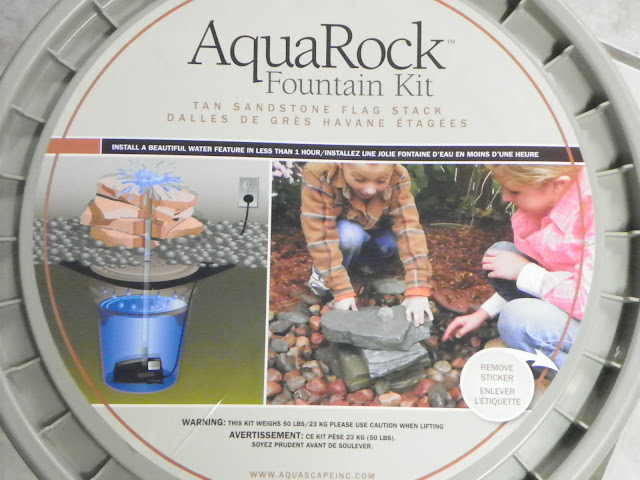I went to the Chicago Flower & Garden Show at Navy Pier yesterday. I brought my digital camera and went prepared to capture as much as possible to plan my gardens and landscaping for this spring. There were a lot of beautiful and interesting garden and lawn and patio concepts on display, and a lot of gardening vendors and experts on hand participating in the show and events.

Show-goers received a light-up flower pin, their choice of orchids, mums, freesias, and some other flower I can't recall now. I chose these pink orchids.
The Show runs through the 18th, and offers workshops, demonstrations, beautiful and interesting exhibits, and many landscaping and horticulture industry vendors and suppliers. The Show hall is divided into an exhibit area and an area for those introducing and selling products. There were a lot of really cool yard and garden displays. The exhibits were big and bold, but I was surprised at the extent of (expensive and oversized) hard-scape exhibits versus actual plant materials.



I was also surprised to see people there trying to sell sleep number beds, pillows, and other things unrelated to gardening, such as gutter covers. And a couple of the Show sponsors were totally unrelated, including Chevy and Humana, which was a little odd. Some of the vendors selling things were annoying, hawking their products as people walked through the aisles. There was one vendor who rather rudely said "No pictures allowed" when I approached her space with the camera out. Sorry you can't see the great yard and garden decorations she made from stone and steel because I couldn't take a picture.
One of my favorite exhibits was this chicken coop. I've been thinking about backyard chickens for a while now and just loved this set up. I could totally see this in my backyard with a little flock of hens eating bugs and weeds in my garden and laying healthy, fresh eggs for my family.
Another favorite was this really cool idea for arbor and gazebo lighting. Mason jars hung with jute cord with tea lights inside looks like an attractive and easy outdoor lighting option. Maybe I would use larger candles for more light, and you'd have to have the extra long matches or a long lighter to light them. One display had mason jars with the lids on them and corded electric lights inside. Not sure how that would work. Do the cords plug into an outlet or do they have to be wired into an electrical source? More work but a more permanent lighting option. There wasn't anyone around to ask when we were at this exhibit.
This display was very interesting. It looks like a good setup for growing and harvesting wheat grass for a continuous harvest. I bought a bag of wheat grass seed about a month ago but haven't planted it yet, trying to figure out the best way to grow it for juicing. This looks better than a stainless steel rack with shallow trays in the kitchen.
These gorgeous sculptures by Bruce Niemi were in the center of the show. I wish I had one in my garden. They are striking, with names like "Encompassed" and "Spatial Harmony." The sculptor was trained at Northern Illinois University and by his sculptor father, and has his work everywhere, including Vernon Hills, Illinois, the town next to mine. You can see more of his work at
www.bruceniemi.com.
We bought this great fountain kit for $32.50, $45 off the regular price as a Show special, from Aquascape Water Gardening. They had three different kinds of rocks to choose from. My husband has been thinking of making a fountain like this for some time now, but here it is all in one neat package ready for assembly for a little more than the price of the pump! It was a great deal, and they were selling them like hotcakes.
The Show was nice, and Navy Pier has more than enough to keep anyone occupied and entertained, but I was a little disappointed at the lack of "wow" factor and some of the annoyances. I was looking for more sustainable gardening products like solar and wind power kits, more technology, more herbs, and just more I guess. I was hoping for cool new ideas and tools and unique and affordable concepts.
Other sights at the Chicago Flower & Garden Show:
This wind power turbine with solar panels was in the local green connect display with a sign that said Ava Power, but no further information, such as pricing, availability, energy generating capacity - all things I was interested to know. I'd like one of these setups in my garden, or maybe a couple of them.
These were fabulous! But could the average gardener afford them?
 Another urban aquaponics operation, Sweet Water Organics, in Milwaukee, Wisconsin, was operational in 2010 with the same type of business. They raise yellow perch, tilapia, and blue gill fish, vegetables including tomatoes, cucumbers, peppers and squash, plus mushrooms and greens such as lettuces, basil, watercress, swiss chard, and sprouts.
Another urban aquaponics operation, Sweet Water Organics, in Milwaukee, Wisconsin, was operational in 2010 with the same type of business. They raise yellow perch, tilapia, and blue gill fish, vegetables including tomatoes, cucumbers, peppers and squash, plus mushrooms and greens such as lettuces, basil, watercress, swiss chard, and sprouts. 

























